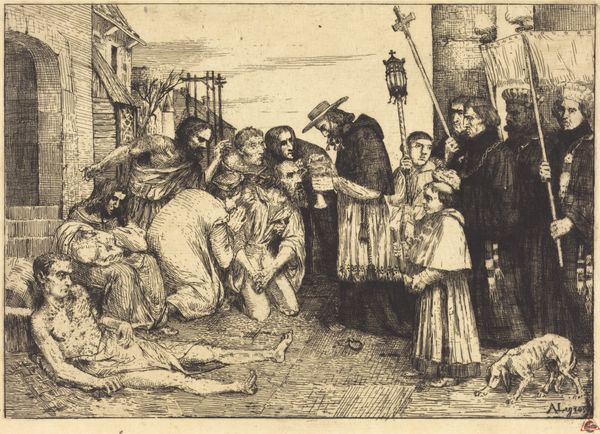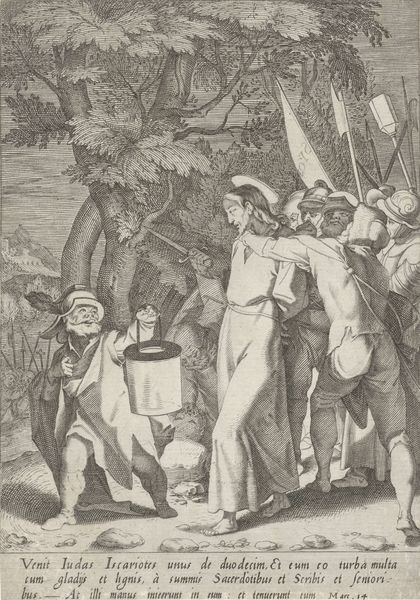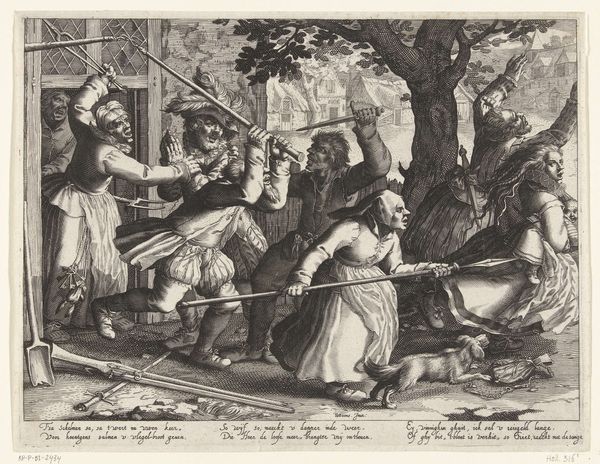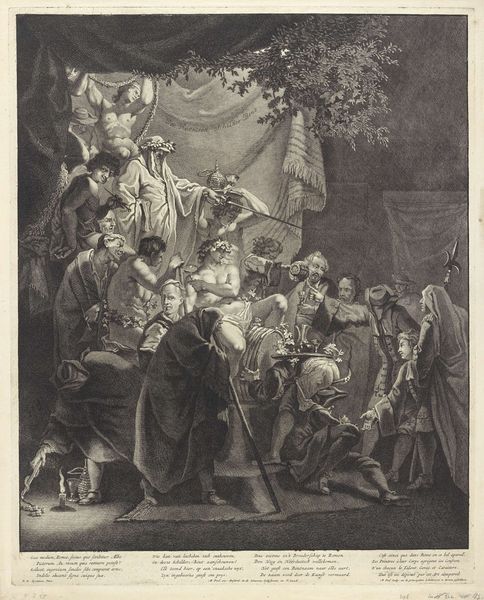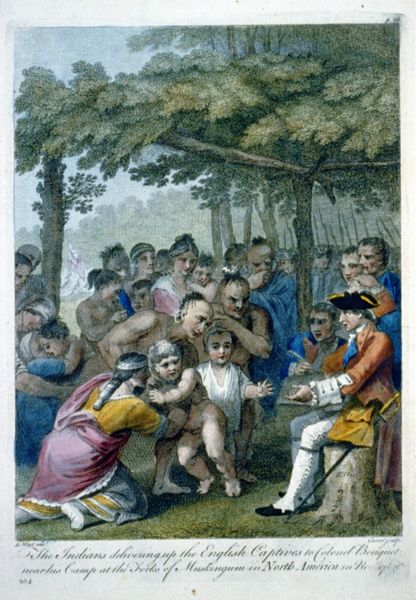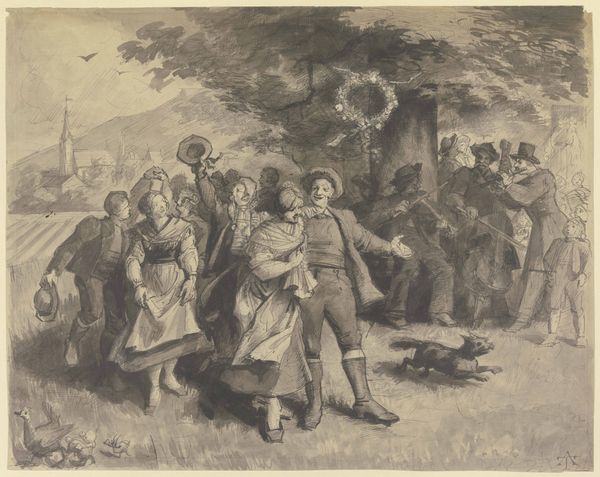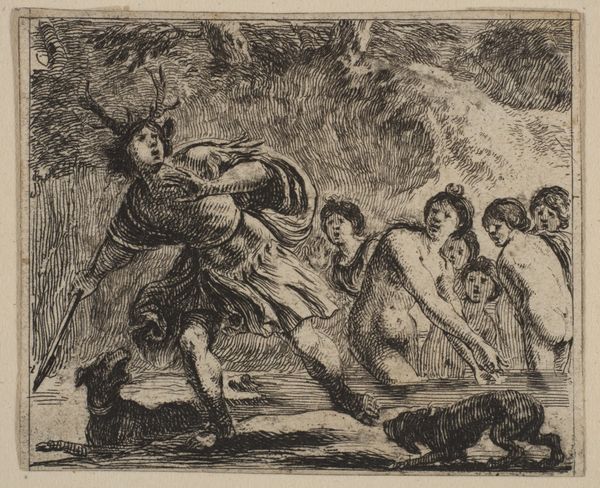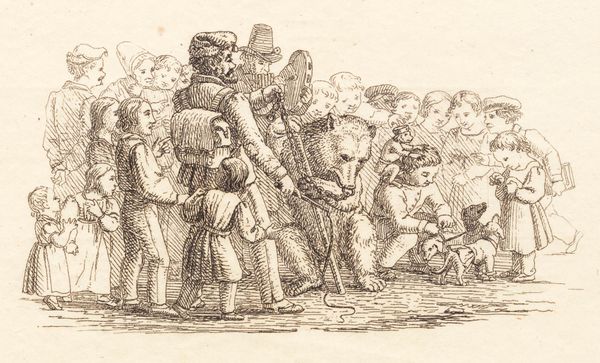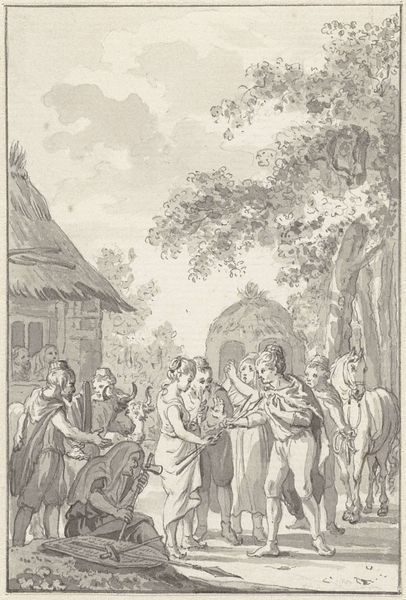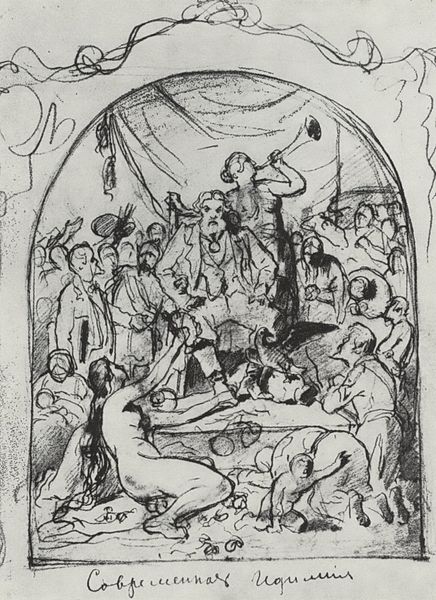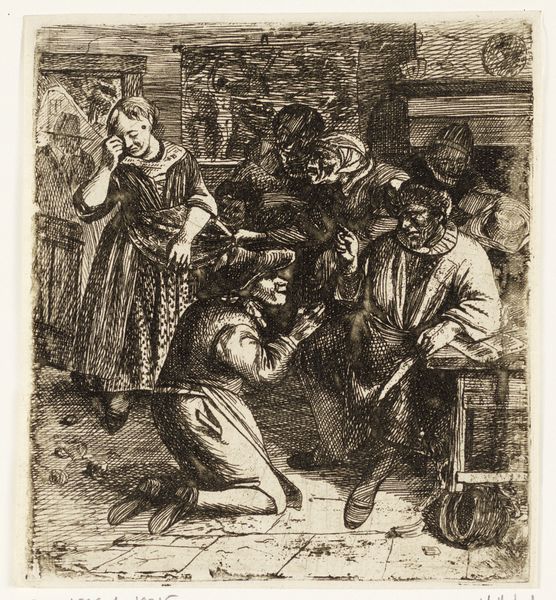
The Indians Delivering up the English Captives to Colonel Bouquet near his camp at the folks of Muskingum in North America in November 1764, 1765 1765 - 1766
0:00
0:00
drawing, pencil
#
portrait
#
drawing
#
neoclacissism
#
narrative-art
#
coloured pencil
#
group-portraits
#
pencil
#
history-painting
#
academic-art
#
realism
Copyright: Public Domain: Artvee
Editor: This is Benjamin West's "The Indians Delivering up the English Captives to Colonel Bouquet near his camp at the forks of Muskingum in North America in November 1764," made around 1765. It's a pencil and colored pencil drawing, and I’m immediately struck by how West has arranged the figures; the composition feels very deliberate and almost theatrical. What do you see when you look at it? Curator: Let's focus on the formal aspects of West’s composition. Notice how the artist employs a pyramidal structure, a compositional technique frequently used in Renaissance art to create a sense of balance and stability. Can you see how the figures are arranged to form a triangle? Editor: Yes, now I see it! Colonel Bouquet’s figure acts as the vertex of an implied triangle, and the indigenous people and returning captives form the base. The base looks unstable in comparison to Bouquet at the top, as the figures blend together through less distinct outlines, especially when comparing to the figures in the front, who all seem to have space to breathe. Curator: Precisely. Consider, too, the use of line and light. West uses sharp, clear lines to define the figures, especially the Europeans, thus creating a sense of order and control, whereas the tonal range for figures near the bottom have blended features to display more contrast. Does that influence your perception? Editor: It does. The Europeans almost seem spotlighted; maybe West uses the contrast of the different lines to represent some social hierarchy or differences between social status? Curator: The interplay of realism and academic art influences the way we interpret narrative; that sense of order, that visual clarity, communicates something beyond just the depicted scene. It speaks to a particular sensibility that values reason, order, and control above all else, and informs our impression. What's your take away now? Editor: It’s definitely much more clear, the arrangement isn't only to create some image from history; the structural qualities, line work, and focus really say something about perspective. Thanks so much!
Comments
No comments
Be the first to comment and join the conversation on the ultimate creative platform.
